Selecting The Proper Personal Tool Tether or Lanyard
A significant workplace safety issue has been attracting quite a bit of attention lately – Tools and other objects that are dropped when working at heights. Apart from the inconvenience of having to interrupt work to retrieve or replace a dropped tool, there is an extraordinarily serious risk of injury or damage. A one-pound tool falling just 30 feet will hit the ground in less than 2 seconds. It is a site safety issue. Even a common tape measure could kill someone. It happened just a few years ago at a construction site of a new 50-story tower. A tape measure was accidentally dropped and killed an unsuspecting deliveryman stepping from a vehicle at the foot of the building.
The chance of being struck by dropped tools and other dropped objects has proven to be a considerable risk. Equipment and machinery can also be severely damaged, sometimes beyond repair, from a falling tool. At greater risk than others, certain industries such as nuclear power generation, wind power, aerospace manufacturing, and oil and gas production are more prone to damage and injury. A relatively small wrench could cause severe damage to the fuselage or wings of an airplane as it bounces off the plane the whole way down. Whether it’s hitting something as
expensive and sensitive as the skin of an airplane, or landing on a pump or bearing, a falling tool is going to create costly damage every time.
Preventative measures such as hard hats, netting, and toe boards are a mitigating practice for this risk, however, regardless of these solutions, they do not entirely prevent incidents. While at heights, active controls utilized to prevent falling tools and objects by tying them off or containing them with tethering systems is a rapidly growing proactive safety practice.
Many safety professionals may not be aware of the range of options available to them. But when tool tethers are ordered without specifications beyond the weight of the tool, chances are good
that the tether will not be appropriate. And some factors may impact the safety of the worker using the tether or lanyard. An improperly mated tool and lanyard can inherently lead to reduced
productivity and exposure to injury. When the tethering device limits mobility, recoils too fast, or exerts too much resistance upon extension, the backlash from workers is often the result
causing fatigue, annoyance, and often non-compliance in the use of the lanyard.
Retractable Tethers for workers using small hand tools less than 3.5 pounds.
Picture a worker using multiple small tools… the electrician using screwdrivers, pliers, amp meters… or a scaffold builder climbing up with a group of tools in his pouch… these tools and
working conditions are poor choices for coil type tethers or lanyards. But they are ideal for a retractable tether that safely permits multiple tools to be attached to the worker with virtually no risk of entanglement or snagging. Tool and gear retractable tethering devices offer hundreds of combinations of mounting systems, line technology, and shock-absorbing capabilities. There are retractable tethers available in weight-specific configurations for tools that weigh 1 lb, 2 lbs, and 3.5 lbs with some offering a 360 o rotating belt clip or attachment to a fall-protection harness.
These highly engineered retractable safety tethers that provide cost-effective security have found their way into new tethering applications… the safety vest for example. Hands-free and tucked
away in a pocket and using small, light-weight retractable tethers, a technician’s vest can safely hold and secure many small hand tools and equipment. Easily and securely mounted, these
retractable cables keep valuable small gear safe and out of the way but always remain easily available for use.
For heavier tools, tethers should be anchored to a structure, not a person.
Tethering heavy tools (generally over 5 lbs.) to a person is also a significant safety concern. Safety engineers should instead consider using anchor tethers that transfer the shock load produced by a dropped tool from the worker to the structure. For very heavy tools (over 10 pounds), structure anchoring should be mandatory.
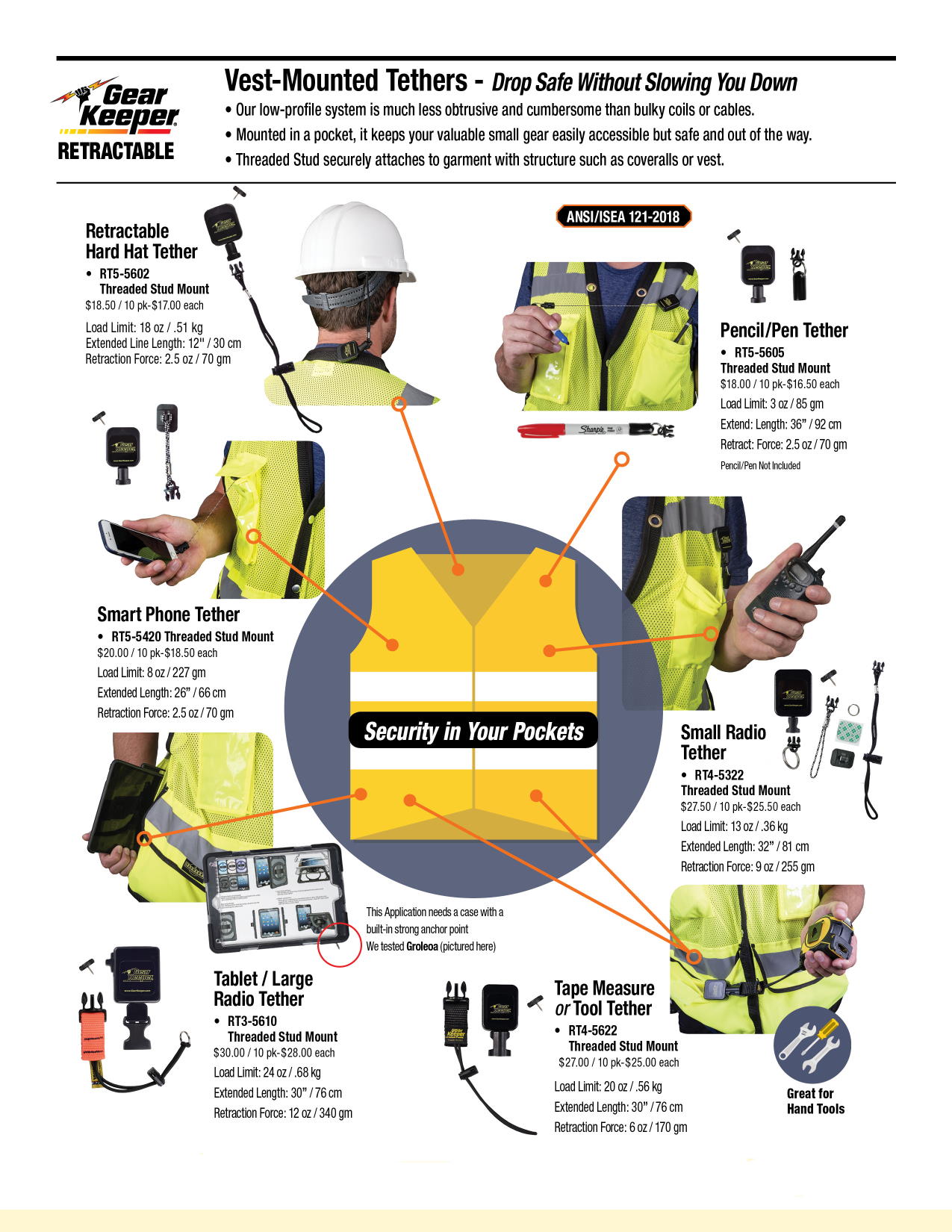
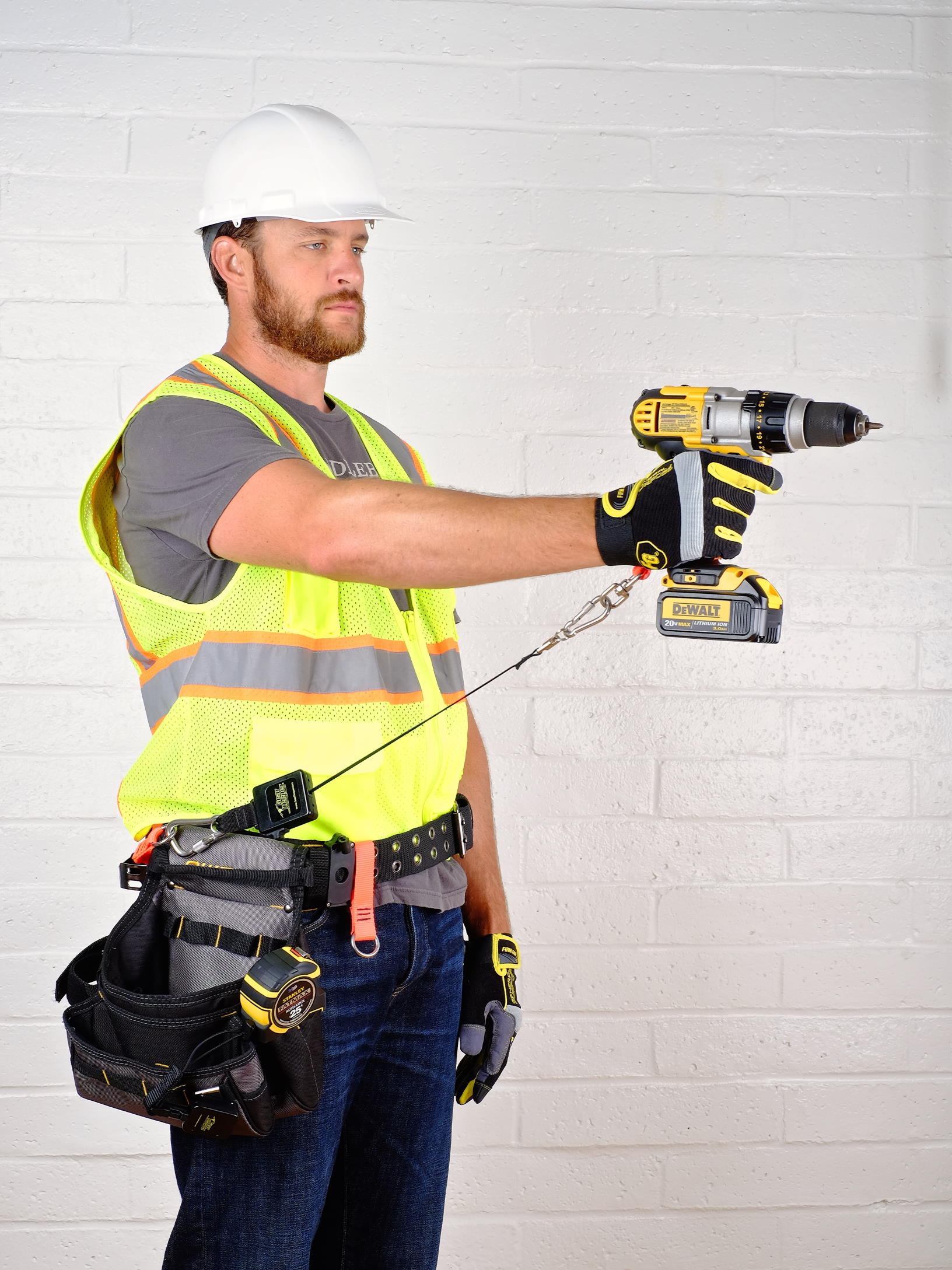
In addition to the obvious protection of transferring the shock load, the anchored tether also minimizes entanglement issues but because of the longer reach, other concerns need to be considered. The tether must have a higher stretch capability, otherwise, it will coil up or cause stress to the worker. It also needs to have higher break strength since the drop distance of the tool (as a result of the longer reach), will produce higher shock loads at the stop point. Gear Keeper tethers have solved that problem. A polyurethane coil is employed inside of the tubular webbing giving the worker an extremely long stretching ability, using virtually no force. The result is the creation of a large working radius with a shorter retracted length.
Tether’s that are not ergonomically designed may cause muscles to tire quickly as the technician extends it to fully reach. Additionally, if the tethered tool is fairly light, the “shock-absorbing” elastic may cause the tool to “slingshot” back to the user too swiftly and may injure or unbalance the worker.
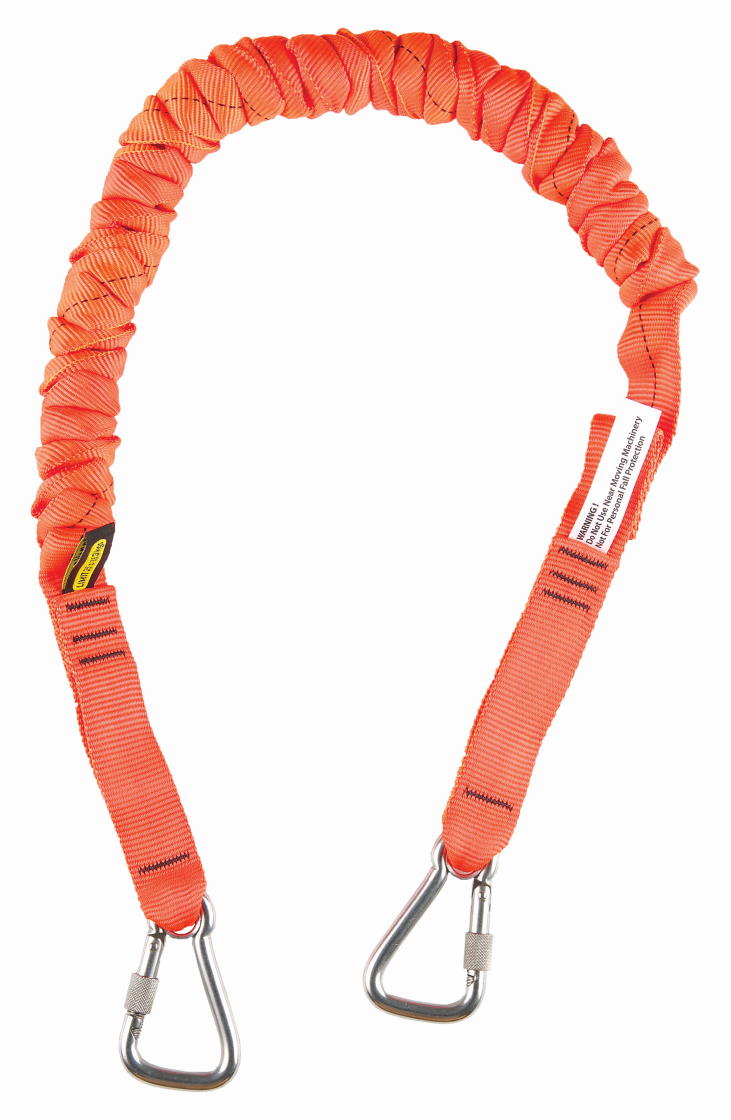
Quick-Release fittings for multiple tools on one tether.
Change the tool, not the tether. A single tool lanyard is sufficient when one specific tool is the only thing tethered, but what do you do when you have multiple tools to tether? It’s a very common scenario in most industries. Here again, there are many options for worker safety in multi-tool tethering situations. Quick Connect tethers offer easy tool change-out and are available on a large selection of tethers.
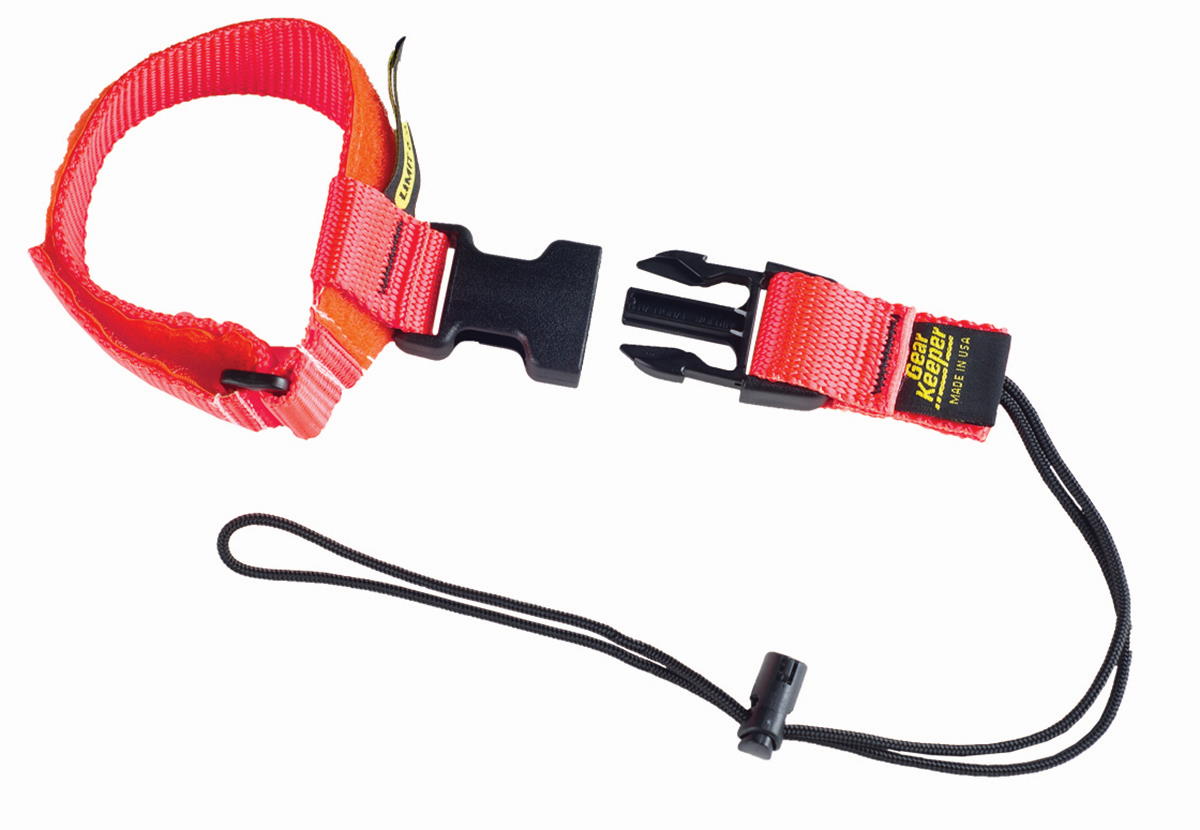
Tool Tether Ratings
Tool tether ratings have not been established or standardized by either the tethering or the safety industry. Although the ANSI-121 guidelines set minimum requirements for manufacturing, there are no universal specifications governing tool tether applications as there are with fall protection devices. As such, the safety engineer, when specifying a tool lanyard, has no real basis for choosing proper tethers and arbitrarily determines tether selection based on the weight of the tool, i.e. “I need a tether for a 3 lb tool.” Without additional specifications, the safety engineer maybe creating a potentially dangerous situation.
Although both the supplier and the buyer may have good intentions, this is a potentially hazardous situation for a couple of reasons. One, using a tether that is rated for a much heavier tool may not operate effectively because the stretch and the recoil are considerably out of scale for the lighter tool. An additional and more serious problem is when a worker, assuming a lanyard is rated for 15 lbs, thinks he can connect a 15 lb tool to his tool belt. He can’t. That 15 lb tool, at a full drop length, will exceed 250 lbs of a shock load. More than enough to knock a worker off his perch. What if a personal fall protection device does not further protect that person?
I strongly advocate that safety engineers explore practical tool tethering solutions with reputable manufacturers. A lanyard that is rated for the weight of the tool is safe to use. When a tool that weighs 5 to 10 lbs is attached to a person, an appropriate safety professional should always approve it. Above 10 lbs, the tool should always be secured to a proper structure.
Lastly, if anchored tethers are used, the anchor point should also be approved by a qualified safety professional. Many times, a lifeline rated for personal fall protection can also be used, but again the appropriate safety person should approve this as well.
Make the employee your partner in tethering.
For your tool and instrument tethering safety program to be successful, a partnership must exist between the employee and the safety engineer. A properly tethered tool or instrument makes work more efficient. It simplifies every repair, maintenance, or manufacturing project by keeping the workers’ tools handy and accessible. When tethers correctly complement the tool, worker, and application, you will have an advocate rather than an antagonist.
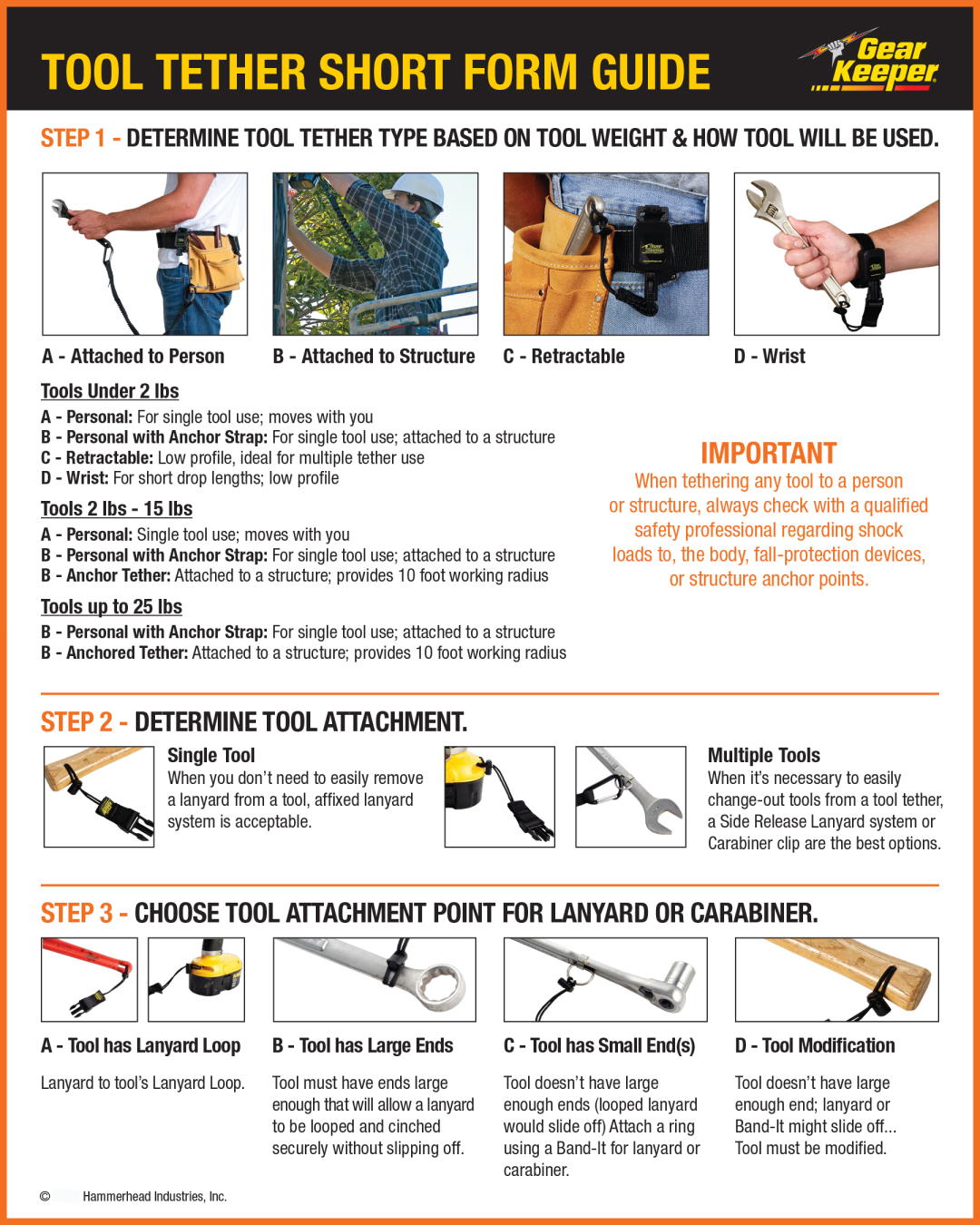
In conclusion
The safety engineer’s goal incorrect tethering procedures is to make sure the tool, application, and recoil/retraction force are in balance. When the tool is extended for use, only minimal force should be necessary so as not to cause worker fatigue or in the reverse, cause a ”kick” when retracted. The result of correct tethering is when the tool is stored, held, or used, the dangers of entanglement, fatigue, and annoyance are minimized and worker satisfaction and output are maximized. Tethering manufacturers, like those previously mentioned, focus on being solutions providers, working with customers who are trying to put together a tool tethering safety program that adequately protects their employees without inhibiting their work demands.
